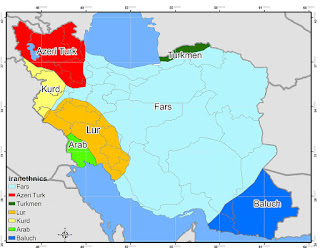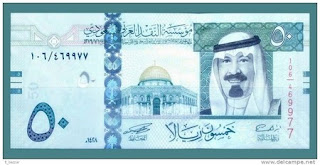Creating Frankenstein: Saudi export of wahhabism (JMD in The Korea Times)
There has long been debate about the longevity of the Saudi ruling family. The debate is fuelled by the Al Saud's Faustian with the Wahhabis, proponents of a puritan and intolerant interpretation of Islam that increasingly is becoming as much a liability as it has been an asset.
The bargain has produced the single largest dedicated public diplomacy campaign in history. Estimates of Saudi spending on the funding of Muslim cultural institutions across the globe and the forging of close ties to non-Wahhabi Muslim leaders and intelligence agencies in various Muslim nations that have bought into significant elements of the Wahhabi worldview range from US$75 to $100 billion. The campaign is central to Saudi soft power policy and the Al Saud's survival strategy. One reason that the longevity of the Al Sauds is a matter of debate is the backlash to the propagation of Wahhabism in countries across the globe. More than ever before, theological or ideological similarities between Wahhabism, and its theological parent, Salafism, and jihadism and the Islamic State are under the spotlight. The problem for the Al Sauds is not just that their legitimacy is dependent on their identification with Wahhabism. It is that the Al Sauds, since the launch of the campaign, were often only nominally in control of it and that they have let a genie out of the bottle that now leads an independent life and can't be put back into the bottle. That is pushing the Al Sauds and the Wahhabis closer to a crunch point that could make things worse by sparking ever more militant splits. These will make themselves felt across the Muslim world and in minority Muslim communities elsewhere in multiple ways, including increasing sectarian attitudes in countries like Indonesia, Malaysia, Bangladesh and Pakistan. The Saudi funding campaign draws from one pot of money. Yet, the goal of the campaign differs for the government and the clergy. For the clergy it is about spreading of the faith. For the government it's about soft power. At times the interests of the government and the ulema coincide, and at times they diverge. By the same token, the campaign on some levels has been an unparalleled success, on others success is questionable and one could go even a step further to argue that it risks becoming a liability for the government. It may be hard to conceive of Wahhabism as soft power but Salafism was a movement that had only sprouted miniscule communities in the centuries preceding the rise of 18th century preacher Mohammed ibn Abdul Wahhab, and only started to make real inroads into Muslim communities beyond the Arabian Peninsula 175 years after his death. By the 1980s, the Saudi campaign had established Salafism as an integral part of the· global community of Muslims and sparked greater religiosity in various Arab countries as well as the emergence of Islamist movements and organizations. The soft power aspect of it, certainly in relation to the power struggle between Saudi Arabia and Iran, has paid off - particularly in countries like Malaysia, Indonesia, Bangladesh and Pakistan where sectarian attitudes and attitudes towards minorities and Iran are hardening. The soft power aspect has become all the more important with tensions between Iran Saudi Arabia rising in the wake of the execution in January of dissident Saudi Shiite Sheikh Nimr al Nimr, the storming of the Saudi embassy in Tehran, the subsequent rupture in diplomatic relations and multiple proxy wars the two countries are fighting in Syria, Yemen and elsewhere. Underlying the Saudi-Iranian struggle for hegemony is what is from the Saudi perspective is an existential battle that is sharpened by uncertainty about the kingdom's relationship with the United States. US officials for much of their country's relationship with Saudi Arabia have insisted that the two countries do not share common values, that their relationship is based on common interests. Cooler relations between Washington and Riyadh are driven by the fact that those interests are diverging. The divergence became evident with the eruption of popular revolts in 2011 and even more so with the US persistence in reaching a nuclear agreement with Iran that is returning the Islamic republic to the international fold despite deep-felt Saudi objections. The result has been, with the rise of Saudi King Salman and his powerful son,Mohammed bin Salman, a far more assertive foreign and military policy. Saudi Arabia's new assertiveness is however not a declaration of independence from the United States. On the contrary, Mohammed Bin Salman made clear in a recent Economist interview that it is designed to force the United States to re-engage in the Middle East in the belief that it will constitute a return to the status ante quo: US support for the kingdom as the best guarantor of regional stability. Saudi regional leadership relies on exploitation of a window of opportunity and extending it for as long as possible. That window of opportunity exists as long as the obvious regional powers – Iran, Turkey and Egypt – are in various degrees of disrepair. Punitive international sanctions and international isolation long took care of Iran. But that is what is changing. Iran may not be Arab and maintains a sense of Persian superiority but it has the assets Saud Arabia lacks: a large population base, an industrial base, resources, a battle hardened military, a deep-rooted culture, a history of empire and a geography that makes it a crossroads. Mecca and money will not be able to compete, and certainly not with Wahhabism in control. And that may prove to be the Al Saud's second existential challenge. Wahhabism is likely to increasingly become a domestic liability and a burden in the Al Saud's battle with Iran. As a result, the Al Saud's future is clouded in uncertainty, no more so if and when they lose Wahhabism as the basis for the legitimacy of their absolute rule. James M. Dorsey is a senior fellow at the S. Rajaratnam School of International Studies, co-director of the University of Würzburg's Institute for Fan Culture, and the author of The Turbulent World of Middle East Soccer blog and a forthcoming book with the same title. |




Comments
Post a Comment